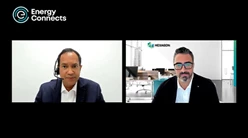World to Pay to Turn Off Green Power Unless Grids Improve
(Bloomberg) -- The world will pay to switch off a huge amount of green power by the end of the decade — thwarting efforts to get off fossil fuels quickly — unless countries improve their electric grids to better integrate wind and solar generation.
Grid issues could cause the world to miss out on as much as 2,000 terawatt-hours of wind and solar generation, according to a report from the International Energy Agency which examined how countries cope with increasing renewable generation in their energy mix. That’s roughly the amount produced last year in China and the US, the world’s two biggest generators.
Much of that missing power production would be lost to what’s known as curtailment — when operators shut off renewable producers for fear of overloading the grid or power plants themselves decide not to run.
Modernizing power grids is the most urgent issue to help combat climate change in the US and Europe, according to a report Wednesday by Generation Investment Management, a firm co-founded by former US Vice President Al Gore. The group urged that “nothing else will matter as much” to the speed of the energy transition as upgrading the grid.
“The need for higher-capacity transmission infrastructure to make use of this incredibly cheap and clean renewable energy” is a serious challenge, Gore said in an interview.

If wind and solar power cannot be effectively integrated to the world’s power grids it could lead to a 20% smaller reduction of CO2 emissions in the power sector should fossil fuels fill the demand gap, the IEA said.
“In recent years, the world has seen a remarkable increase in solar and wind capacity as countries have looked to bolster their energy security and reduce emissions,” said Keisuke Sadamori, director of energy markets and security at the IEA. “But they won’t reap the full benefits without stronger efforts to support the integration of these technologies into power systems.”
Listen on Zero: How to Upgrade the World’s Biggest Machine
The report underscores the challenge of transitioning the world from fossil fuels to renewable resources. While gas and coal-fired power plants can be built anywhere, renewable plants are put where the sun and wind are strongest, sometimes far away from population centers. That requires additional resources to transport power to the grid and to manage the balance between supply and demand.
Power grids also require more investment to scale up. Additional generation that could be built in the coming years may end up waiting for approval from grid operators unable to cope with the increased supply.
(Adds Al Gore report and quote in fourth and fifth paragraphs. Adds chart.)
©2024 Bloomberg L.P.





